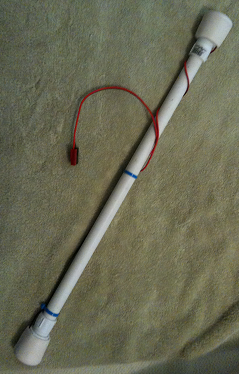Trip of 2013.06.15
- Succeeded: Yes
- First-activation: No
- Propagation forecast on departure:
- 20m-40m good; 6m skip open
- Propagation forecast on return:
- 20m-40m good; 6m skip closed
See my trip planning guide at: SOTA Guide: W4G/NG-004, SummitName
Commentary: Today I snatched victory from the jaws of defeat. After calling CQ for 25 minutes on HF from the summit of Blood Mountain, I’d raised only 3 contacts. I was thinking about moving my setup 20 yards and trying again, just in case I was getting a strange pattern and then throwing in the towel.
Then I threw a “Hail Mary.” I’ve never been able to raise anyone on VHF, but I carry an HT for APRS. (Really never – as in ‘zero contacts.’) I know that one doesn’t call CQ on VHF, so I went to 146.52 and used that classic call, “K4KPK. Hello? Can anyone hear me?” I immediately heard from 2 hams and a short time later a 3rd.
Then I went back to HF, pulled down my vertical and strung my EFHW through the trees at about 6’ and picked up 3 more contacts on 20m.
As I was setting up, a young man (early teens) came up to observe. (His dad was discreetly observing from about 20’ away.) As I was re-doing my antenna, I had a lovely chat with KK4NVH, who recently received his Technician license through a class/club in his school.
Later, as I was packing up, a backpacker paused. Since Blood Mountain is a busy area, I’d already had several, “What’s that?” conversations with hikers today, so I assumed this would be another one. Then he called me by name. I’m 70 miles (and +3400’ altitude) from home, and I run into someone from work! And I’m a telecommuter, so I don’t even run into people from work when I’m at work!
After hiking back to the car and hurrying to Dahlonega, I make it to my favorite barbecue joint, “Smokin’ Gold,” 4 minutes before closing. I ask whether it is too late to get take out because I know they don’t want to seat me at 4 minutes to closing. They tell me to pick a table and to take my time eating.
So 10 points for the activation plus my favorite barbecue, and both of them were by the skin of my teeth. A Grand Day Out.
